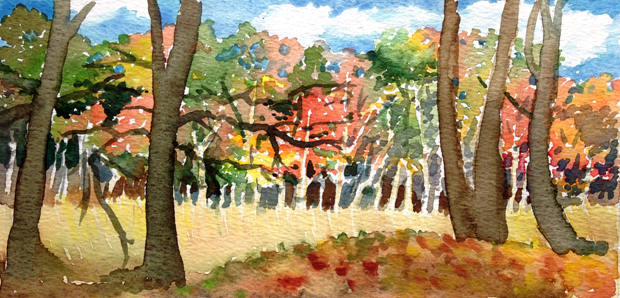Yesterday, I mentioned David Korten’s work on new economic systems, which he calls “living economies.” This strikes me as a beautiful interim step away from our unquestioned disconnection from nature and elevation of reason over intuition, towards a more humble, conscious, and connected relationship with the living earth. We’re talking here about “biomimicry,” which I first discovered from Janine Benyus, a science writer who published a book by the same name in 1997.
Biomimicry has three basic principles. 1) Nature as model. Study, learn, and imitate how nature works, rather than how objects in nature look. 2) Nature as measure. Use an ecological standard to judge the rightness of our innovations. Nature has a 3.8 billion year head start on us and has learned what works, what is appropriate and what lasts. 3) Nature as mentor. Approach nature not from a perspective of what we can extract, but of what we can learn.
People use biomimicry to design objects (airplane wings, helmets, adhesives), and also places, processes and systems that are conducive to life, based on nature’s design intelligence. This is an exciting, rather new, and ongoing inquiry. Since Benyus’ book came out, biomimicry institutes and design programs have sprung up, as well as this wonderful website, Ask Nature, where you can put in a design problem to finish the question, How would nature . . . .?
Here’s an example. My 7th-grade son is learning in science class about properties of fluids, things like surface tension, density, and viscosity. Surface tension is defined as the force between molecules at the surface of a liquid, like water. The tension results from the molecules in the liquid being more attracted to each other than to the air above. To illustrate, he painted this picture: to someone jumping off a bridge, the water’s surface would feel like pavement because of surface tension. If they threw a hammer in first, it would disrupt that bond and allow the person to slip in less painfully.
I don’t even know if that’s scientifically accurate, but I love the idea of it. Actually, I just checked and this was on an episode of MythBusters where they proved that, at least for a high bridge, the hammer would not help. Hmm. I’ll have to shoot an email to my son’s science teacher. For now, let’s get back to David Korten’s example of awakening to life’s wisdom.
In May 1997, Korten met a biologist, Dr. Mae-Wan Ho, whose resonated, so she gave him some of her papers to read. As he describes:
“I was particularly struck by a paper presenting her thesis that science is in the midst of a basic paradigm shift from the metaphor of the machine to the metaphor of the living organism. The difference Dr. Ho articulated between these contrasting metaphors jumped out as a key to sorting out the difference between the society we are and the society we have the potential to become.”
Through serendipitous encounters with other thinkers, including Janine Benyus, Korten came to a critical insight: the process of natural succession (how ecosystems evolve, as what happens in an unmown meadow) can inform how we extricate from the rapacious, dominating global corporate machine into a wholly different economy. The first species to come into that meadow are fast growing, competitive, and transient. Eventually they are replaced by slower growing species that are patient, cooperative, and settled; they have learned to efficiently conserve and share the energy and materials on which they mutually depend.
The key point is this: the more aggressive and individualistic species don’t change their behavior; they are gradually displaced by more evolved species that are better suited to the needs of a mature, cooperative system. Korten writes:
“This suggested that perhaps the most promising path to economic transformation might be through a similar process of locally owned and rooted values-driven enterprises coming together to create the relational webs of living economies of sufficient strength to gradually displace the corporate megaliths.”
When you have 3.8 billion years of design experience behind you, how can you lose? From this thinking and collaboration between science and economics, the “Living Economies” framework was born, and is being used by many socially minded businesses around the country and the world.
“[This] led to a shared insight that many of the elements of a system of living economies are already in place, but remain to be woven together into the functioning, living web, of a new economy. The term ‘suicide economy’ was coined for the existing economy that is rapidly destroying the foundations of its own existence and the survival of the human species.”
For more detail and inspiration along these lines, I highly recommend the working paper titled, “The Path to Living Economies,” from Korten’s website. My experiences with locally owned businesses have an entirely different quality than, say, a trip to Target. Korten has helped me to see my local businesses as birches and oaks to Target’s fireweed; they are farther along the evolutionary path than the big conglomerates. And because they practice patience and cooperation, and share knowledge and resources with like-minded people, they are thriving. They are in it for the long term.
The plants and animals living in an ecosystem in transition are called a seral community. I like that image for our culture at large: we are at an intermediate stage between one kind of story and another. We are a seral community, and the more connections we can make with the other saplings of local, socially minded, cooperative and generous businesses, the sooner the old, aggressive species will die out for lack of nutrients.

